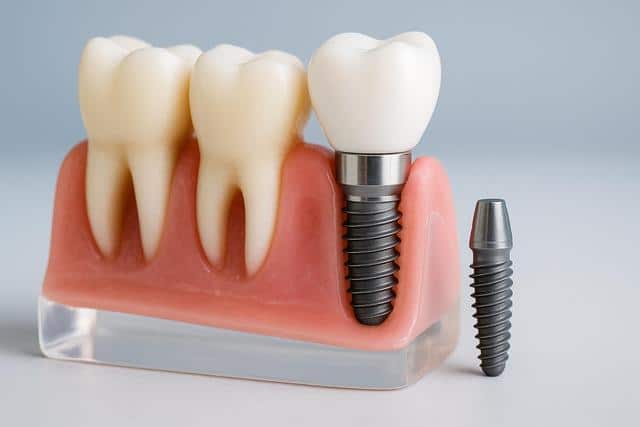
Dental Implants: Procedure, Pros and Cons, Costs, and How to Choose a Provider
Outline
Dental implants replace missing teeth with a small post in the jaw that supports a crown, bridge, or denture. We’ll compare implants with bridges and removable dentures so you can weigh comfort, durability, bone preservation, and upkeep. You’ll learn the steps from consultation to healing and long-term care, including who makes a good candidate. We’ll also cover success rates, common risks, and practical prevention tips. Finally, we’ll break down costs, insurance pointers, and offer a simple tool to help you find experienced providers near you.
Introduction: Why Dental Implants Matter
Missing teeth can make everyday activities—chewing, speaking, and smiling—feel like work. Dental implants offer a fixed solution that can restore function and confidence while helping preserve jawbone volume. Because the topic involves surgery, healing time, and a meaningful investment, it helps to understand what to expect and how implants compare with other options. This guide keeps things practical: plain-language explanations, research-backed insights, and budgeting tips so you can decide if implants align with your goals and timeline.
1) What Is a Dental Implant—and Who Is It For?
A dental implant is a small post placed in the jawbone that acts like an artificial tooth root. Once the bone heals and bonds to the implant, a connector (abutment) is added and topped with a custom crown. For multiple missing teeth, implants can support bridges or stabilize full-arch dentures. Many people choose implants because they’re fixed in place, feel secure when chewing, and help reduce bone loss that naturally follows tooth extraction.
Good candidates typically have healthy gums, adequate bone volume (or the ability to build it with grafting), and overall health that supports healing. Conditions like uncontrolled diabetes or heavy smoking can slow healing, while medications or prior radiation may require tailored planning. A thoughtful medical and dental history is part of any responsible evaluation.
A quick story from the real world: after a weekend basketball mishap cracked a lower molar beyond repair, I opted for an implant over a bridge. The biggest surprise wasn’t the surgery; it was how methodical the process felt. Imaging, a clear timeline, and check-ins made each step predictable. The crown has felt like a normal tooth ever since—no special tricks needed to chew a crunchy salad—just routine home care and regular checkups. Your own experience will vary, but a well-planned case tends to feel organized rather than rushed.
2) Implants vs. Bridges vs. Dentures: A Side‑by‑Side View
When replacing teeth, it helps to compare how options look, feel, and hold up over time. The American Dental Association’s patient overview explains the three-phase process and why osseointegration (bone bonding) is central to implant strength [1]. For people who lack bone in specific areas, periodontal specialists outline techniques like sinus augmentation and ridge modification to build support for implants [2].
Here’s a practical comparison to frame your decision:
| Factor | Single Implant | Fixed Bridge | Removable Partial Denture | Full Denture |
|---|---|---|---|---|
| Chewing stability | High (fixed to bone) | High (fixed to teeth) | Moderate (can move) | Variable; adhesive often needed |
| Effect on adjacent teeth | None (standalone) | Requires reshaping neighboring teeth | Clips may affect abutment teeth | N/A (replaces all teeth) |
| Bone preservation | Helps maintain bone | Limited effect on bone | No direct bone benefit | No direct bone benefit |
| Cleaning & maintenance | Brush/floss like teeth (with extras) | Floss threaders needed | Remove to clean | Remove daily; relines over time |
| Longevity potential | Implant can last decades; crown may be replaced | Often 7–10+ years with care | May need periodic adjustments | Relines/replacements likely |
| Comfort & speech | Typically natural feel | Typically natural feel | Can affect speech initially | Adaptation period common |
| Upfront cost | Higher per tooth | Moderate | Lower | Lower (per arch), variants vary |
As the ADA summarizes: “Dental implants are a popular and effective way to replace missing teeth and are designed to blend in with your other teeth.” [1]
3) Success Rates, Risks, and How to Protect Your Results
Long-term outcomes are a key concern. A large clinical outcomes report from Cleveland Clinic notes a 95% implant integration success rate in 2023, aligning with international averages [3]. A meta‑analysis in Evidence‑Based Dentistry found high 5‑year survival for implant‑supported single crowns (about 97% at the implant level) while reminding us that technical issues (like screw loosening) can occur and require maintenance [4].
Understanding risks helps you minimize them. The U.S. Food and Drug Administration lists potential complications such as injury to nearby structures during placement, infection around the implant, and loosening or failure—especially with poor hygiene or uncontrolled conditions like diabetes and smoking [5]. The FDA also notes that implants are commonly made of titanium or zirconia and are evaluated to international safety standards [5].
Prevention in plain language: keep plaque low with brushing, interdental cleaning, and regular professional care; manage systemic conditions with your medical team; and avoid tobacco. If you ever notice bleeding, swelling, or a loose feeling around an implant, call your dentist promptly. For context, tooth loss remains a public health issue—more than 1 in 7 adults 65+ in the U.S. have lost all their teeth—so prevention and maintenance pay dividends whether or not you choose implants [6].
4) Costs, Insurance, and Smarter Budgeting
Costs vary by case complexity, region, and the professionals involved. A consumer‑friendly roundup estimates a single‑tooth implant (implant, abutment, and crown) commonly ranges from roughly $3,100 to $5,800, with multi‑tooth and full‑arch solutions costing more [7]. Large insurers similarly estimate $2,800 to $5,600 for a single implant in many markets (often excluding the crown) [8].
Coverage differs widely. Original Medicare generally does not cover dental implants, with limited exceptions tied to specific medical procedures [9]. Some Medicare Advantage and private dental plans may offer partial coverage or an annual allowance that can be applied to implants—details vary by plan, so read benefit summaries carefully [10][11]. For financing, many practices offer third‑party options with promotional terms; understand interest, fees, and payoff windows before you sign [12].
| Cost Component | Typical Range (USD) | Notes |
|---|---|---|
| Consultation & 3D imaging | $350–$515 | Imaging helps assess bone and plan placement [7] |
| Implant placement (per site) | $1,500–$3,000+ | Depends on anatomy and surgical complexity [8] |
| Abutment | $300–$600 | Connector between implant and crown [7] |
| Crown (per tooth) | $1,000–$2,500 | Material and customization affect price [7] |
| Bone graft / sinus lift (if needed) | $400–$3,000+ | Only when additional support is required [2] |
| Full‑arch solution (per arch) | $15,000–$25,000+ | Implant‑supported dentures (“All‑on‑4/6” variants) [7] |
- Insurance snapshot: Original Medicare usually excludes implants [9]. Some Medicare Advantage plans include dental allowances; check dollar caps and frequency limits [10].
- Financing: Read promotional terms carefully; deferred interest can apply if balances aren’t fully paid within the promo period [12].
- Tax‑advantaged accounts: HSAs/FSAs can offset qualified out‑of‑pocket costs [11].
5) Timeline, Candidacy, and Day‑to‑Day Care
For many patients, implant treatment follows three broad phases: surgical placement, a healing period while bone bonds to the implant, and final restoration with a crown or bridge. The ADA’s patient overview describes both traditional staged timelines and situations where teeth and implants may be placed in a single visit, depending on case factors [1]. If the back upper jaw lacks bone or the ridge is too thin, periodontal procedures such as sinus augmentation or ridge modification may be recommended before or along with implant placement [2].
Medical and lifestyle factors matter. Uncontrolled diabetes, smoking, and untreated gum disease can increase risks like infection or delayed healing, as outlined in FDA guidance [5]. For home care, plan on twice‑daily brushing with a soft brush, interdental cleaning around abutments, and regular professional maintenance. Patient‑education resources suggest that, especially in the first year after restoration, more frequent professional cleanings and checks may be advised; the schedule is individualized by your dental team [14].
What does a typical day with an implant look like after healing? Much like life with natural teeth. Brush, clean between teeth, and keep routine checkups. If you grind your teeth at night, a protective night guard can help safeguard both implants and natural teeth—ask about one if you notice morning jaw soreness or flattened tooth edges [5].
6) Choosing a Qualified Provider—and Finding One Near You
Experience matters for planning, placement, and restoration. Look for clinicians with advanced training in implant dentistry, a portfolio of similar cases, and clear communication about timelines, risks, and costs. Professional organizations offer helpful patient hubs and dentist‑finder tools—for example, the American Academy of Implant Dentistry’s consumer resources include education and a locator for credentialed providers [13].
Before you commit: request a written treatment plan, ask who performs each step (surgical vs. restorative), and confirm what happens if a component fails during the warranty period. It’s reasonable to ask about implant systems used (titanium or zirconia), whether parts are widely available, and how emergencies are handled after hours.
Implant FAQs
How long does the implant process take?
Simple cases may be restored in a few months, while complex cases with grafting take longer. The ADA’s patient page describes both staged and same‑day approaches, depending on bone quality and bite factors [1].
Are implants safe around MRIs or X‑rays?
The FDA notes that dental implants can distort imaging but is not aware of adverse events related to MRI or X‑ray procedures; always tell imaging staff you have implants [5].
What are implants made of?
Most are titanium or zirconia; both are evaluated under international standards for medical devices, per the FDA [5].
Find implant dentists near you (ZIP search)
Use the tool below to search Google Maps for implant providers in your area.
Conclusion
Implants can deliver stable chewing, a natural appearance, and support for long‑term oral health. Compared with bridges and dentures, they avoid reshaping neighboring teeth and can help maintain jawbone, but they require surgery, healing time, and a higher up‑front cost. If you’re considering implants, align expectations around timeline and budget, commit to home care and regular maintenance, and choose a clinician who explains every step clearly. With a thoughtful plan and consistent care, implants can be a durable part of a healthy smile.
Websources
- American Dental Association — Implants
- American Academy of Periodontology — Dental Implant Procedures
- Cleveland Clinic — Dental Implant Success Rate
- Evidence‑Based Dentistry (Nature) — Implant‑supported crowns, outcomes
- U.S. FDA — Dental Implants: What You Should Know
- CDC — Tooth Loss Facts
- Forbes Health — How Much Do Dental Implants Cost?
- Delta Dental — Understanding Dental Implant Costs
- Medicare.gov — Dental Services Coverage
- NerdWallet — Does Medicare Cover Dental Implants?
- Investopedia — Getting Dental Implants Covered by Insurance
- Investopedia — How Does CareCredit Work?
- American Academy of Implant Dentistry — Consumer Information & Finder
- Dentalcare.com — Dental Implant Maintenance (patient education)


